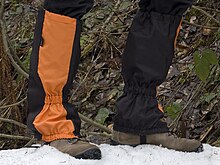
Mountaineering, mountain climbing, or alpinism is a set of outdoor activities that involves ascending mountains. Mountaineering-related activities include traditional outdoor climbing, skiing, and traversing via ferratas that have become sports in their own right. Indoor climbing, sport climbing, and bouldering are also considered variants of mountaineering by some, but are part of a wide group of mountain sports.
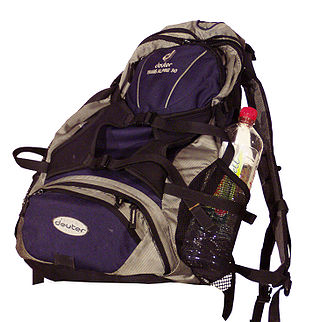
A backpack—also called knapsack, rucksack, pack, booksack, bookbag, haversack or backsack—is, in its simplest frameless form, a fabric sack carried on one's back and secured with two straps that go over the shoulders; but it can have an external or internal frame, and there are bodypacks.

Camping is a form of outdoor recreation or outdoor education involving overnight stays with a basic temporary shelter such as a tent. Camping can also include a recreational vehicle, sheltered cabins, a permanent tent, a shelter such as a bivy or tarp, or no shelter at all. Typically, participants leave developed areas to spend time outdoors, in pursuit of activities providing them enjoyment or in a form of educational experience. Spending the night away from home distinguishes camping from day-tripping, picnicking, and other outdoor activities.
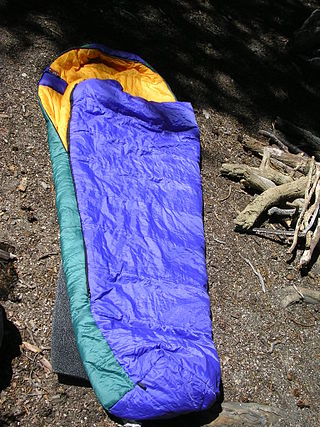
A sleeping bag is an insulated covering for a person, essentially a lightweight quilt that can be closed with a zipper or similar means to form a tube, which functions as lightweight, portable bedding in situations where a person is sleeping outdoors. It is also commonly used indoors for people who do not have beds or at sleepovers. Its primary purpose is to provide warmth and thermal insulation through its synthetic or down insulation. It also typically has a water-resistant or water-repellent cover that protects, to some extent, against wind chill and light precipitation, but a tent is usually used in addition to a sleeping bag, as it performs those functions better. The bottom surface also provides some cushioning, but a sleeping pad or camp cot is usually used in addition to that purpose. The bottom surface of a sleeping bag may be moderately water repellent, but a plastic tarp or groundsheet is often used to protect against moist ground.

Trail running is a type of running that takes place on outdoor trails, often in mountainous terrain, and often includes significant ascents and descents. Trail running is overseen by the International Trail Running Association (ITRA) and includes longer races.

Backpacking is the outdoor recreation of carrying gear on one's back while hiking for more than a day. It is often an extended journey and may involve camping outdoors. In North America, tenting is common, where simple shelters and mountain huts, widely found in Europe, are rare. In New Zealand, hiking is called tramping, and tents are used alongside a nationwide network of huts. Hill walking is equivalent in Britain, though backpackers make use of a variety of accommodation, in addition to camping. Backpackers use simple huts in South Africa. Trekking and bushwalking are other words used to describe such multi-day trips.

Survival skills are techniques used to sustain life in any type of natural environment or built environment. These techniques are meant to provide basic necessities for human life, including water, food, and shelter. Survival skills also support proper knowledge and interactions with animals and plants to promote the sustaining of life over time.
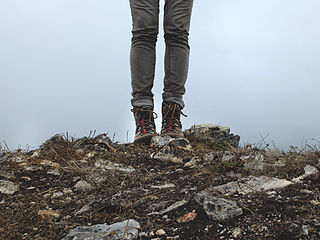
Hiking (walking) boots are footwear specifically designed for protecting the feet and ankles during outdoor walking activities such as hiking. They are one of the most important items of hiking gear since their quality and durability can determine a hiker's ability to walk long distances without injury. Hiking boots are constructed to provide comfort for walking considerable distances over rough terrain. Boots that protect the hiker's feet and heel are recommended. Hiking boots give ankle support and are fairly stiff. A less popular alternative is to use light trainers with thin soles. Footwear should be neither too loose nor too tight, to help prevent blisters and sore feet. Hiking socks that wick sweat from the feet, provide warmth, and cushion the feet are recommended and a thin, inner sock may also help. Most hiking boots are also designed for other outdoor activities such as backpacking, climbing, mountaineering, and hunting.

A survival kit is a package of basic tools and supplies prepared as an aid to survival in an emergency. Civil and military aircraft, lifeboats, and spacecraft are equipped with survival kits.
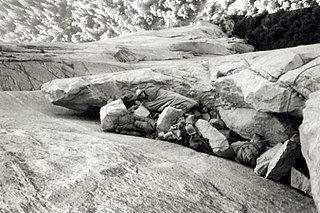
A bivouac shelter or bivvy is any of a variety of improvised camp site or shelter that is usually of a temporary nature, used especially by soldiers or people engaged in backpacking, bikepacking, scouting or mountain climbing. It may often refer to sleeping in the open with a bivouac sack, but it may also refer to a shelter constructed of natural materials like a structure of branches to form a frame, which is then covered with leaves, ferns and similar material for waterproofing and duff for insulation. Modern bivouacs often involve the use of one- or two-person tents but may also be without tents or full cover. In modern mountaineering the nature of the bivouac shelter will depend on the level of preparedness, in particular whether existing camping and outdoor gear may be incorporated into the shelter.
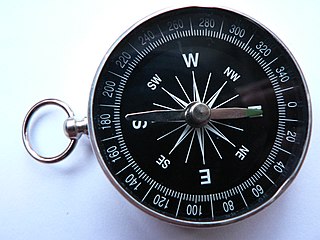
The Ten Essentials are survival items that hiking and Scouting organizations recommend for safe travel in the backcountry.
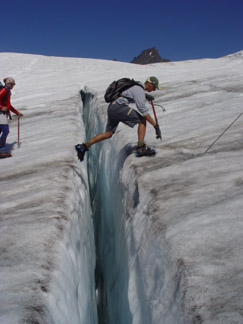
Outdoor recreation, such as hiking, camping, canoeing, cycling, or skiing, entails risks, even if participants do not recklessly place themselves in harm's way. In some circumstances, such as being in remote locations or in extreme weather conditions, even a minor accident may create a dangerous situation that requires survival skills. However, with correct precautions, even fairly adventurous outdoor recreation can be enjoyable and safe.

Fjällräven is a Swedish brand specialising in outdoor equipment—mostly upscale clothing and luggage. It was founded in 1960 by Åke Nordin (1936–2013) from Örnsköldsvik in northern Sweden. The company went public in 1983 with an over-the-counter listing in Stockholm. Since 2014, Fjällräven has been a subsidiary of Fenix Outdoor International AG, which is listed on the Stockholm Stock Exchange. The group also includes the Tierra, Primus, Hanwag, Brunton, and Royal Robbins brands. The CEO of Fenix as of March 2018 was Martin Nordin, the oldest son of Åke Nordin.
Karrimor is a British brand of backpacks, outdoor and sports equipment, and clothing.

Ultralight backpacking is a style of lightweight backpacking that emphasizes carrying the lightest and least amount of gear. While no technical standards exist, some hikers consider "ultralight" to mean an initial base weight of less than 4.5 kg (9.9 lb). Base weight is the weight of a fully loaded backpack at the start of a trip, excluding worn weight and consumables such as food, water, and fuel. Base weight can be lowered by reducing the weight of individual items of gear, or by choosing not to carry that gear. Ultralight backpacking is most popular among thru-hikers.
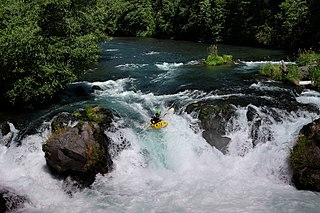
Packraft and trail boat are colloquial terms for a small, portable inflatable boat designed for use in all bodies of water, including technical whitewater and ocean bays and fjords. A packraft is designed to be light enough to be carried for extended distances. Along with its propulsion system and safety equipment the entire package is designed to be light and compact enough for an individual to negotiate rough terrain while carrying the rafting equipment together with supplies, shelter, and other survival or backcountry equipment. Modern packrafts vary from inexpensive vinyl boats lacking durability to sturdy craft costing over US $1,000. Most weigh less than 4 kg (9 lbs) and usually carry a single passenger. The most popular propulsion systems involve a kayak paddle that breaks down into two to five pieces. Most often they are paddled from a sitting position, although kneeling can be advantageous in some situations.

Fastpacking is a combination of trail running and ultralight backpacking. It is described by writer Clint Cherepa as "hiking the ups, jogging the flats, and running the downs", depending on the gradient, because of the weight carried. Participants carry a light pack with essential supplies, including a sleeping bag and tent, or similar form of shelter, if mountain huts or other accommodation is not available. The weight carried will vary but fastpackers aim at no more than 15 pounds (6.8 kg) and some achieve less than 10 pounds (4.5 kg). This activity may be undertaken either unsupported, self-supported, or supported. "Unsupported fastpackers make no use of outside assistance along the route", while self-supported fastpackers will leave caches of supplies along the intended route.

Camping food is food brought on or designed for camping, hiking, and backpacking trips. The term also encompasses ingredients that can be used to make said foods. The primary differences relate to campers' and backpackers' special needs for foods that have appropriate cooking time, perishability, weight, and nutritional content. To address these needs, camping food is often made up of freeze-dried, dehydrated, pre-cooked, pre-prepared, or otherwise preserved foods that can last extended periods.

Backpacking with animals is the use of pack animals, such as a horse, llama, goat, dog, or donkey to help carry the weight of a backpackers gear during an excursion. These animals need special considerations when accompanying backpackers on a trip. Some areas restrict the use of horses and other pack animals. For example, Great Basin National Park does not allow domestic animals at all in backcountry areas.
Seatrekking is a sport that consists in exploring the shorelines of oceans, seas, bays, lakes or rivers both above and below the water over the course of several days, without the aid of a boat or a watercraft. Seatrekking involves swimming, snorkeling, freediving and hiking, and combines all these disciplines into a distinctive form of sport and outdoor experience. Unlike coasteering, seatrekking includes overnight camping and involves trips of longer distances.





